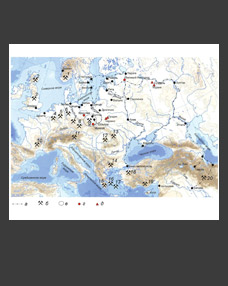 Polina S. Ankusheva1,*, Ivan A. Blinov1,**, Daria V. Kiseleva2,***, Elena V. Kupriyanova3,****, Igor K. Novikov4,*****, Igor V. Chechushkov5,******, Andrey V. Epimakhov5,*******
Polina S. Ankusheva1,*, Ivan A. Blinov1,**, Daria V. Kiseleva2,***, Elena V. Kupriyanova3,****, Igor K. Novikov4,*****, Igor V. Chechushkov5,******, Andrey V. Epimakhov5,*******
1South Ural Federal Scientific Centre for Mineralogy and Geoecology, Ural Branch RAS, Miass, Russia
2Institute of Geology and Geochemistry, Ural Branch RAS, Ekaterinburg, Russia
3Chelyabinsk State University, Chelyabinsk, Russia
4Kurgan State University, Kurgan, Russia
5South Ural State University, Chelyabinsk, Russia
*E-mail: polenke@yandex.ru
**E-mail: ivan_a_blinov@mail.ru
***E-mail: podarenka@mail.ru
****E-mail: dzdan@mail.ru
*****E-mail: novikov2479@mail.ru
******E-mail: chivpost@gmail.com
*******E-mail: epimakhovav@susu.ru
Keywords: the Bronze Age, the Southern Trans-Urals, wool, textiles, Sr isotopes, the Alakul culture.
The article focuses on determining the possible regions of origin of wool fiber in Bronze Age Alakul textiles from the Southern Trans-Urals (first half of the 2nd millennium BC). The main method is the analysis of 87Sr/86Sr isotope ratios. The comparison was made for values of 12 textile samples from the Stepnoye VII, Alakul and Agapovka II burial grounds with those on interpolated background maps of bioavailable strontium and for other archaeobiological materials of these microregions. It was found that 5 out of 12 examined textile samples have an isotopic signal that differs from the local intervals in the vicinity of the necropolises within a radius of 10–15 km. This indicates the existence of metabolic processes that could be associated both with the import of animals with fleece suitable for spinning, and with the movements of textiles and the owners of the costume themselves.
DOI: 10.31857/S0869606324030055, EDN: XAGQXZ







